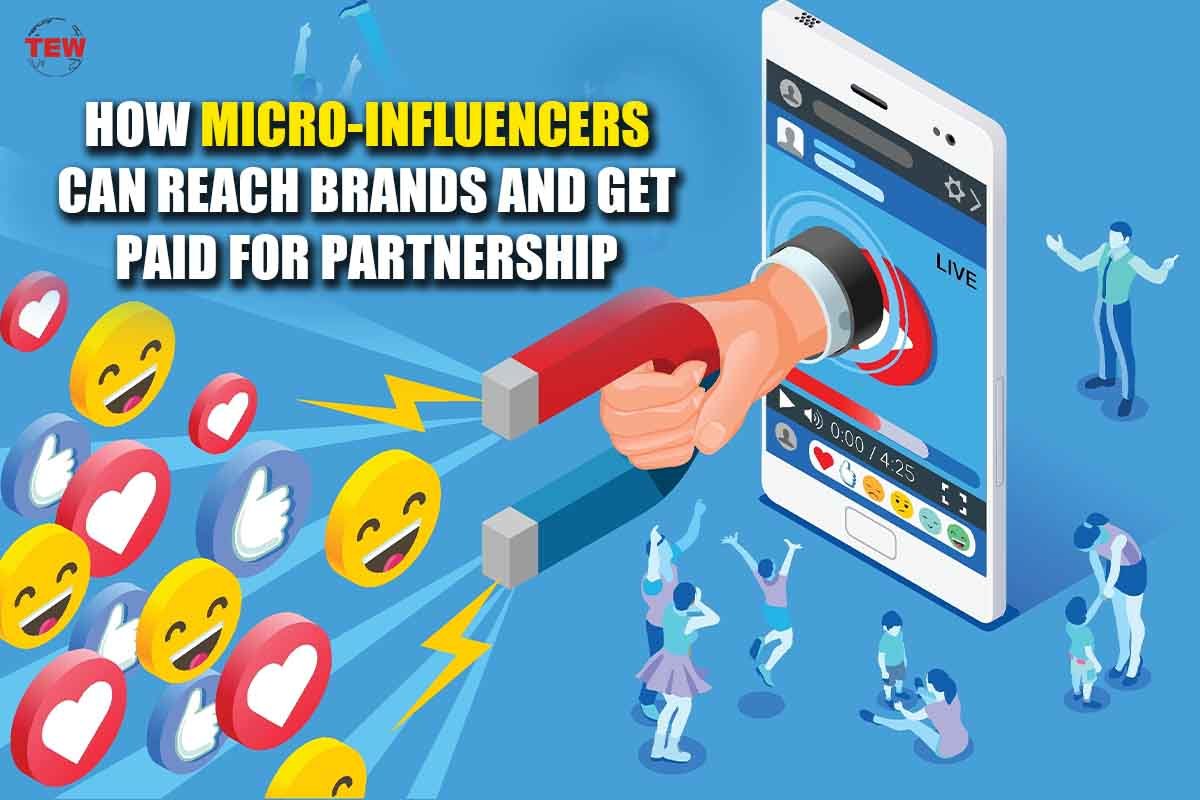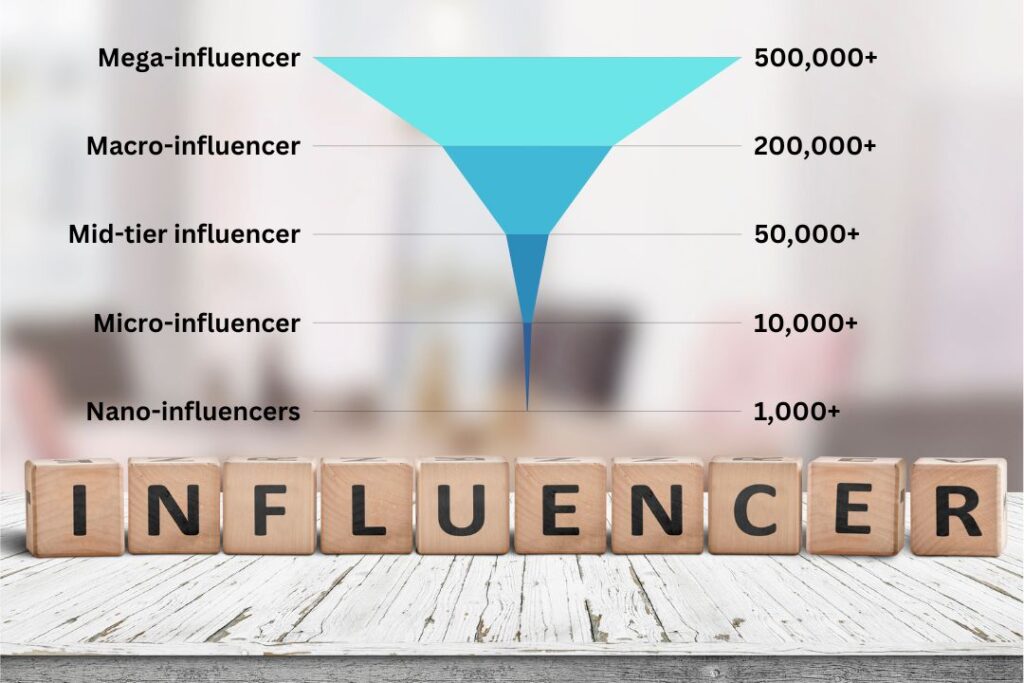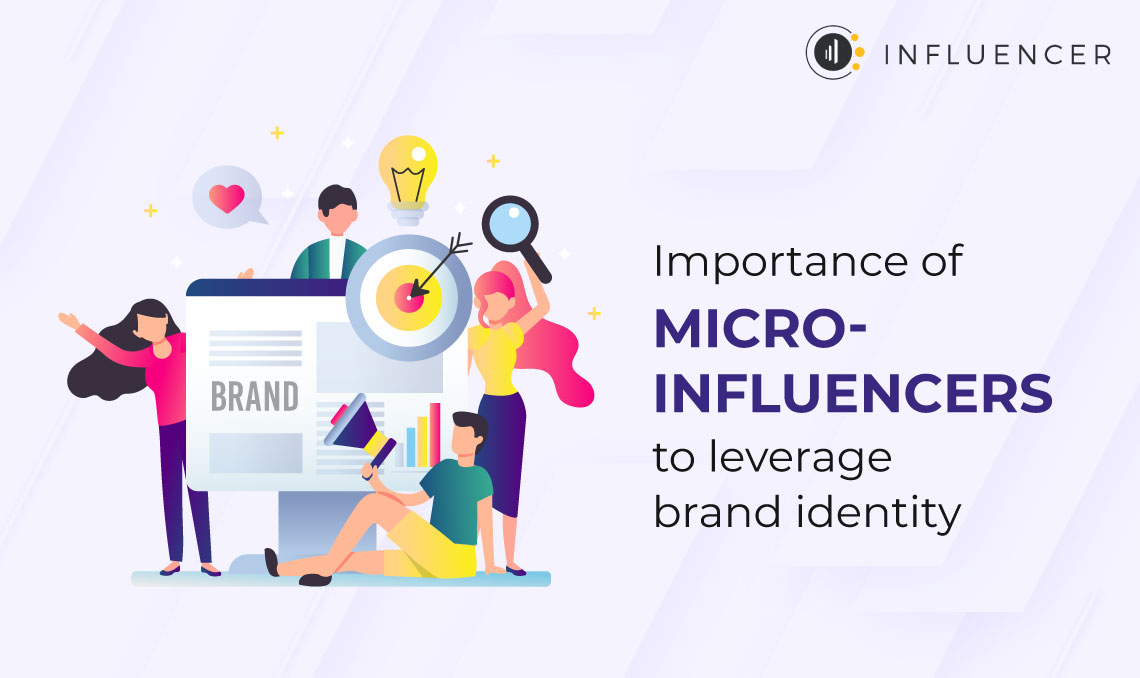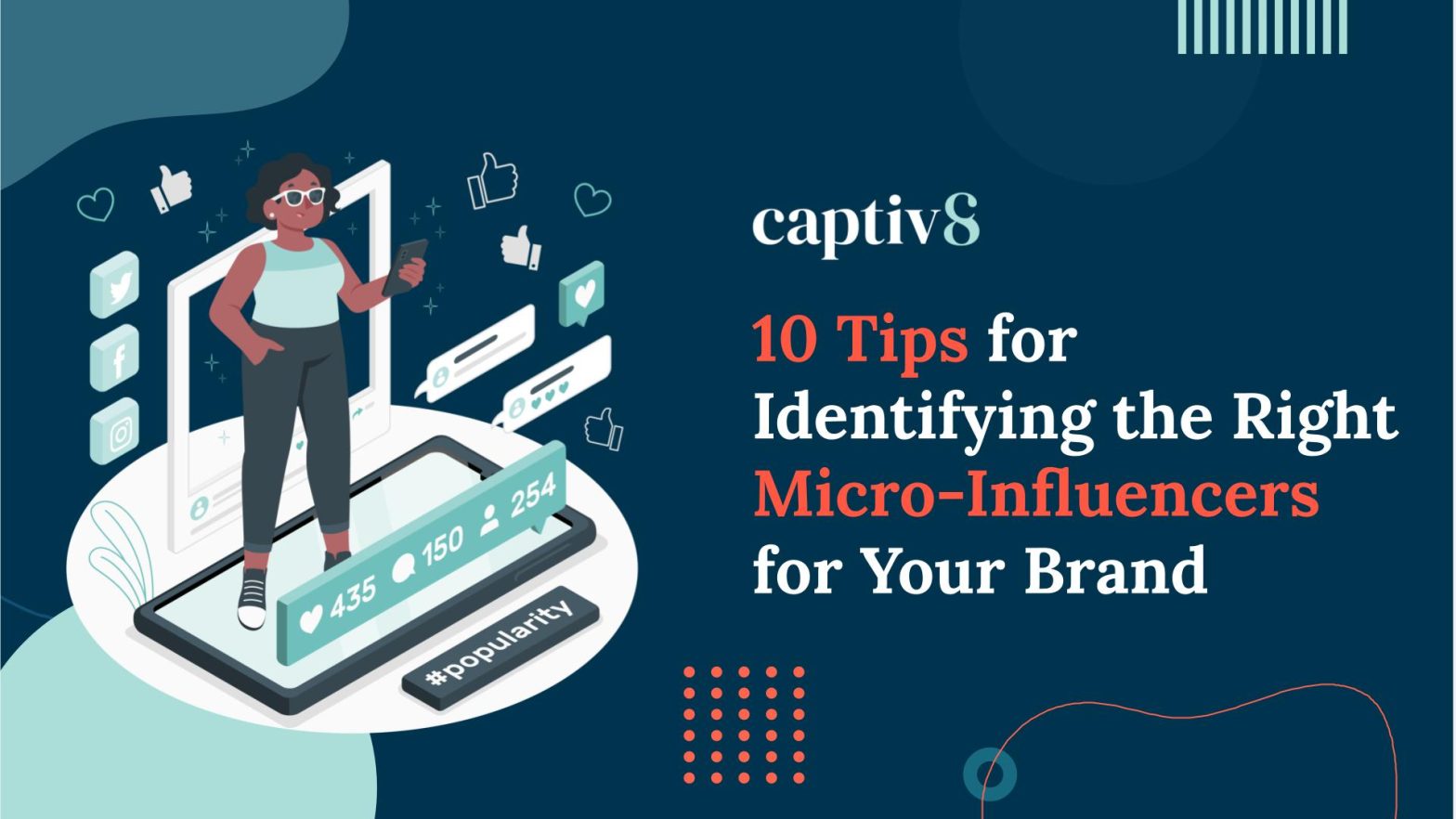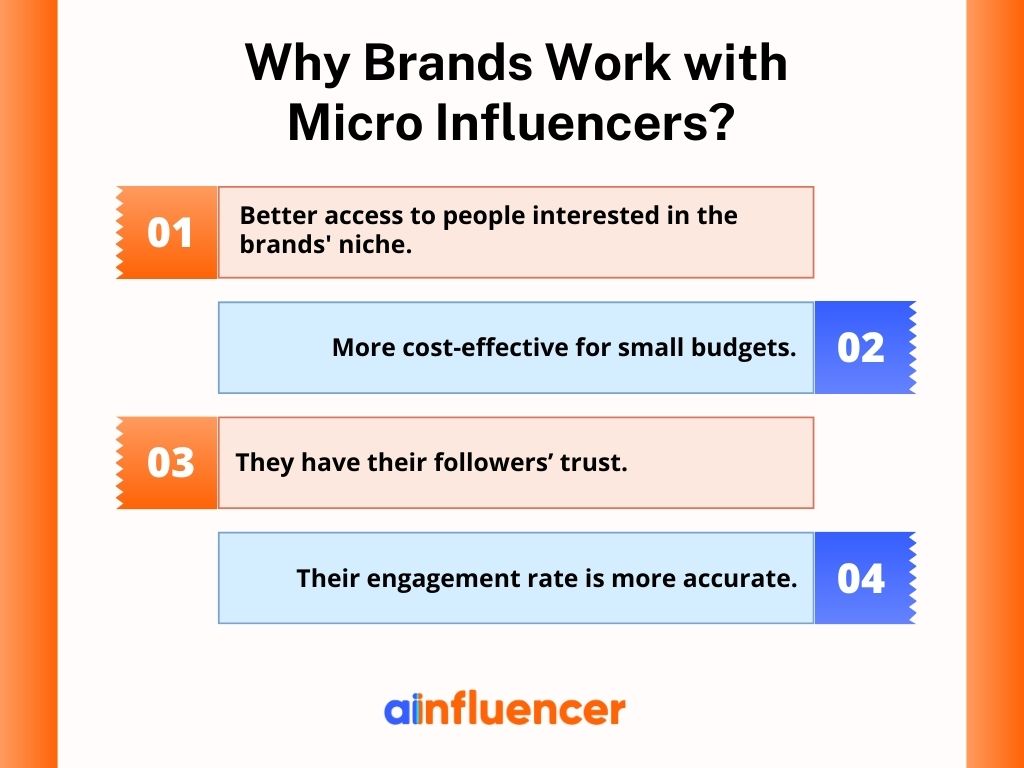What are Micro Influencers and Why Do Brands Love Them
Micro influencers have become a crucial component of modern marketing strategies, particularly for brands looking to expand their online presence and reach niche audiences. These individuals typically have between 1,000 and 100,000 followers on social media platforms, allowing them to maintain a strong connection with their audience and promote products or services in a more authentic and engaging way.
One of the primary reasons brands are drawn to micro influencers is their ability to offer niche audience engagement. Unlike larger influencers, who often have a broader but less targeted following, micro influencers have built a reputation and expertise within a specific area, making them more relatable and trustworthy to their audience. This, in turn, enables brands to tap into a highly engaged and relevant audience, increasing the likelihood of driving conversions and sales.
Another significant advantage of partnering with micro influencers is cost-effectiveness. Compared to larger influencers or traditional advertising methods, micro influencers often require lower fees and can provide a higher return on investment (ROI). This makes them an attractive option for brands with limited marketing budgets or those looking to maximize their online presence without breaking the bank.
As the influencer marketing landscape continues to evolve, brands are increasingly looking for micro influencers who can help them achieve their marketing goals. By partnering with these individuals, brands can benefit from increased credibility, social proof, and reach, ultimately driving business growth and revenue. Whether you’re a brand looking to expand your online presence or a marketer seeking to optimize your influencer marketing strategy, understanding the power of micro influencers is crucial for success in today’s digital age.
How to Identify the Right Micro Influencers for Your Brand
When searching for micro influencers to partner with, it’s essential to identify individuals who align with your brand values, target audience, and marketing goals. To do this, research their content quality, engagement rates, and audience demographics to ensure they are a good fit for your brand.
Start by analyzing their content quality, including the type of content they create, the frequency of their posts, and the level of engagement they receive. Look for micro influencers who produce high-quality content that resonates with their audience and aligns with your brand’s messaging.
Next, examine their engagement rates, including their likes, comments, and shares. Micro influencers with high engagement rates are more likely to have a loyal and active audience, which can lead to increased brand awareness and conversions.
Additionally, research their audience demographics, including their age, location, interests, and behaviors. This will help you determine whether their audience aligns with your target market and whether they can help you reach your desired audience.
Brands looking for micro influencers should also consider their niche expertise and how it relates to their marketing goals. For example, if you’re a fashion brand, look for micro influencers who specialize in fashion and have a strong following in that niche.
By taking the time to research and identify the right micro influencers for your brand, you can build a successful partnership that drives results and helps you achieve your marketing goals.
The Benefits of Partnering with Micro Influencers for Product Reviews
Partnering with micro influencers for product reviews can be a highly effective way for brands to increase credibility, social proof, and reach. By collaborating with micro influencers who have a genuine interest in their products, brands can tap into their audience’s trust and loyalty, ultimately driving sales and revenue.
For example, beauty brand Glossier partnered with micro influencer and skincare expert, Hyram Yarbro, to review their products. The partnership resulted in a significant increase in brand awareness and sales, as Hyram’s audience trusted his opinion and were more likely to try the products he recommended.
Similarly, fashion brand ASOS partnered with micro influencer and fashion blogger, Emma Hill, to showcase their latest clothing lines. The partnership helped ASOS reach a new audience and increase sales, as Emma’s followers were inspired by her fashion sense and trusted her recommendations.
When partnering with micro influencers for product reviews, brands should look for individuals who have a genuine interest in their products and a track record of creating high-quality content. By doing so, brands can increase the credibility and authenticity of their marketing efforts, ultimately driving long-term success.
Additionally, micro influencers can provide brands with valuable feedback and insights on their products, helping them to improve and refine their offerings. This can be especially beneficial for brands looking to launch new products or enter new markets.
Overall, partnering with micro influencers for product reviews can be a highly effective way for brands to increase credibility, social proof, and reach. By collaborating with micro influencers who have a genuine interest in their products, brands can tap into their audience’s trust and loyalty, ultimately driving sales and revenue.
What Brands Look for in Micro Influencers: A Deep Dive
When searching for micro influencers to partner with, brands consider a range of factors to ensure they find the right fit for their marketing goals. One of the key factors is audience size, as brands want to reach a large enough audience to make a significant impact. However, audience size is not the only consideration, as brands also look for micro influencers with high engagement rates, indicating a strong connection with their audience.
Content quality is another crucial factor, as brands want to partner with micro influencers who create high-quality content that aligns with their brand values and messaging. This includes factors such as content style, tone, and frequency, as well as the micro influencer’s ability to create engaging and relevant content for their audience.
Niche expertise is also an important consideration, as brands want to partner with micro influencers who have a deep understanding of their industry or niche. This expertise can help micro influencers create more effective content and provide valuable insights to their audience, ultimately driving more conversions and sales for the brand.
Micro influencers can optimize their profiles and content to attract brand partnerships by showcasing their unique value proposition, highlighting their niche expertise, and demonstrating their ability to create high-quality content. By doing so, micro influencers can increase their visibility and appeal to brands looking for partners who can help them achieve their marketing goals.
Additionally, micro influencers can use social media analytics tools to track their performance and provide brands with data on their reach, engagement, and conversions. This data can help brands make informed decisions about which micro influencers to partner with and how to optimize their marketing campaigns for maximum impact.
By understanding what brands look for in micro influencers, individuals can position themselves for success and increase their chances of securing brand partnerships. By showcasing their unique value proposition, highlighting their niche expertise, and demonstrating their ability to create high-quality content, micro influencers can attract brands and drive long-term success.
How to Reach Out to Brands as a Micro Influencer
As a micro influencer, reaching out to brands can be a daunting task, but with the right approach, you can increase your chances of securing partnerships and collaborations. The first step is to craft a compelling pitch that showcases your unique value proposition and highlights your relevance to the brand’s target audience.
Your pitch should include a brief introduction to your micro influencer profile, including your audience demographics, engagement rates, and content quality. You should also highlight your niche expertise and how it aligns with the brand’s marketing goals.
When reaching out to brands, it’s essential to build relationships with brand representatives, rather than just sending a generic email or message. Research the brand’s marketing team and find the right person to contact, and make sure to personalize your pitch to show that you’ve taken the time to understand the brand’s needs and goals.
Another key aspect of reaching out to brands is to showcase your content quality and creativity. Share examples of your previous work, including blog posts, social media posts, and videos, and highlight your ability to create engaging and relevant content for your audience.
Finally, be prepared to negotiate and discuss the terms of the partnership, including compensation, content requirements, and promotion channels. Be clear about your expectations and boundaries, and make sure to have a contract or agreement in place to protect both parties.
By following these tips and strategies, micro influencers can effectively reach out to brands and secure partnerships that drive long-term success. Remember to stay authentic, creative, and professional, and always keep your audience in mind when collaborating with brands.
Measuring the Success of Micro Influencer Partnerships
When partnering with micro influencers, it’s essential to track and measure the success of the partnership to ensure that it’s meeting your marketing goals. One of the key metrics to track is engagement rates, including likes, comments, and shares. This will help you understand how well the micro influencer’s content is resonating with their audience.
Another important metric to track is website traffic, including the number of visitors and page views. This will help you understand how effective the micro influencer’s content is at driving traffic to your website.
Sales conversions are also a crucial metric to track, including the number of sales generated from the micro influencer’s content. This will help you understand the return on investment (ROI) of the partnership and whether it’s meeting your marketing goals.
To track and measure the success of micro influencer partnerships, you can use analytics tools such as Google Analytics, Hootsuite Insights, or Sprout Social. These tools will provide you with detailed metrics and insights on the performance of the partnership, including engagement rates, website traffic, and sales conversions.
When using analytics tools, it’s essential to set clear goals and objectives for the partnership, including specific metrics and targets. This will help you understand what success looks like and whether the partnership is meeting your marketing goals.
Additionally, it’s essential to regularly review and analyze the data to identify areas for improvement and optimize the partnership for better results. This may include adjusting the content strategy, targeting different audiences, or adjusting the compensation structure.
By tracking and measuring the success of micro influencer partnerships, you can ensure that your marketing efforts are effective and meeting your goals. Remember to stay focused on the metrics that matter most to your business and adjust your strategy accordingly.
Common Mistakes to Avoid When Partnering with Micro Influencers
When partnering with micro influencers, there are several common mistakes that brands and micro influencers should avoid. One of the most significant mistakes is a lack of clear communication, which can lead to misunderstandings and misaligned expectations.
Another mistake is having unrealistic expectations, such as expecting a micro influencer to reach a massive audience or drive a significant amount of sales. Micro influencers are best suited for niche audiences and targeted marketing efforts, and brands should adjust their expectations accordingly.
Non-compliance with FTC guidelines is also a common mistake that brands and micro influencers should avoid. The FTC requires that sponsored content be clearly labeled, and brands and micro influencers must comply with these regulations to avoid fines and penalties.
Additionally, brands and micro influencers should avoid partnering with influencers who have fake or bought followers, as this can lead to a lack of engagement and a waste of marketing dollars.
Brands should also avoid partnering with micro influencers who do not align with their brand values or target audience. This can lead to a lack of authenticity and a negative impact on the brand’s reputation.
Finally, brands and micro influencers should avoid neglecting to track and measure the success of their partnerships. This can lead to a lack of understanding of the partnership’s effectiveness and a failure to optimize future partnerships.
By avoiding these common mistakes, brands and micro influencers can build successful partnerships that drive long-term success and achieve their marketing goals.
Conclusion: The Future of Influencer Marketing with Micro Influencers
In conclusion, micro influencers have become a crucial component of modern marketing strategies, offering brands a unique opportunity to reach niche audiences and drive long-term success. By understanding the characteristics of micro influencers, identifying the right partners, and building authentic relationships, brands can unlock the full potential of influencer marketing.
As the influencer marketing landscape continues to evolve, it’s essential for brands to stay ahead of the curve and adapt to the changing needs of their target audience. By partnering with micro influencers, brands can tap into the power of social proof, increase their credibility, and drive sales conversions.
However, it’s crucial for brands to avoid common mistakes, such as lack of clear communication, unrealistic expectations, and non-compliance with FTC guidelines. By doing so, brands can ensure that their influencer marketing efforts are effective, efficient, and compliant with regulatory requirements.
Looking to the future, it’s clear that micro influencers will continue to play a vital role in the world of influencer marketing. As brands increasingly look for ways to reach niche audiences and drive long-term success, micro influencers will become an essential component of their marketing strategies.
By building authentic relationships with micro influencers, brands can create a loyal community of advocates who will help drive their marketing efforts forward. Whether you’re a brand looking to expand your online presence or a marketer seeking to optimize your influencer marketing strategy, understanding the power of micro influencers is crucial for success in today’s digital age.

